 By Pepper Parr and Mark Gillies
By Pepper Parr and Mark Gillies
May 18, 2014
BURLINGTON, ON. With winter finally gone – still a bit of a chill in the air at times and pools won’t be all that warm for a bit – the Friends of Freeman Station can now get active and get the foundation for the building in place and then begin the real renovation work.
Mark Gillies, Fundraising and Membership Chairman, Friends of Freeman Station put together a really good collection of photographs that set out the role the railway station played in the economic growth of Burlington.
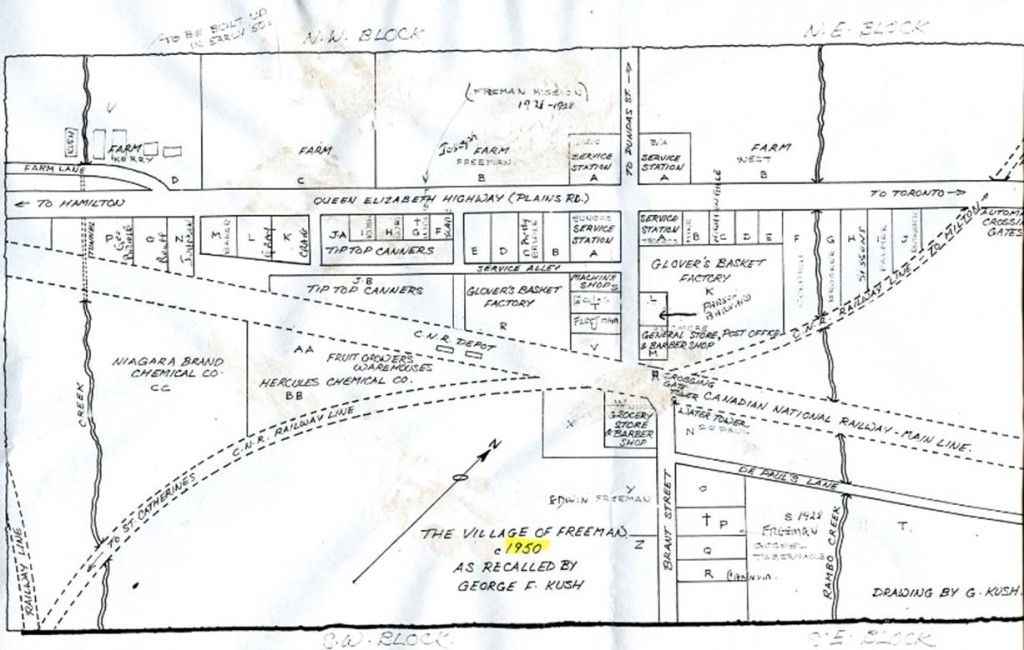
Hand drawn map of the Village of Freeman.
At our core we were a farming community blessed with some of the most fertile land in the country. We grew fruit and shipped it around the world. Burlington was at times described as the melon capital of the world. I once thought that perhaps Pepper Drive was named because they knew I was moving to the city – nope – it was once the locale of a very large pepper farm.
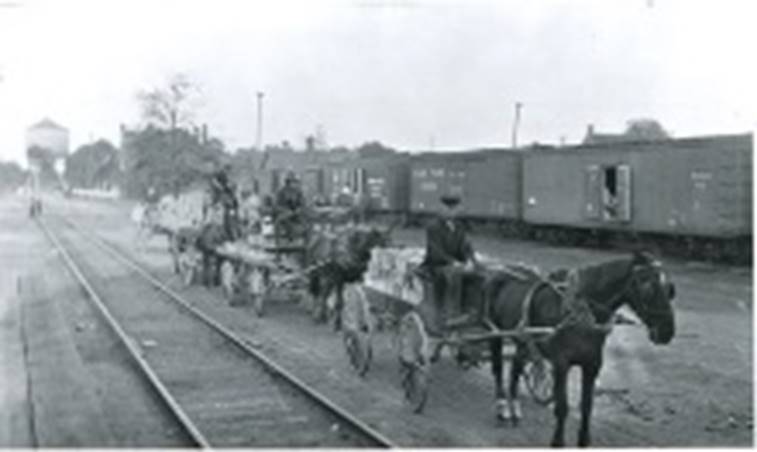
Farmers with their wagons wait patiently to load their produce at the Freeman Station.
It was known as the “fruit train” with its refrigerated cars. Burlington was a short stop – reported to be just 20 minutes and the farmers loaded their own produce.
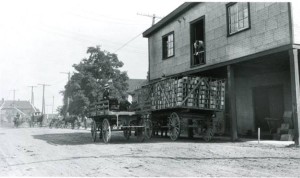
Baskets to hold the fruit grown in Burlington was manufactured in town.
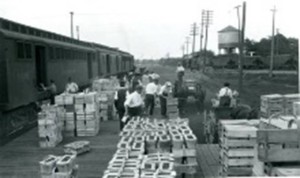
Farmers loaded their produce onto the freight cars.
Farmers have to do the loading themselves. They need to work quickly. These market gardeners had been working long before dawn, picking the crops and packing them into their baskets and crates. The train usually left twenty minutes after arriving, heading to Toronto with produce from “The Garden of Canada”.
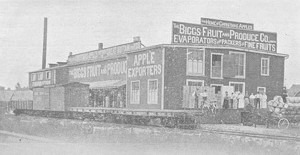
Biggs “evaporated” fruit.
Post cards were the rage in the early 1900’s. Everyone had a post card made up and sold them for pennies. The Grand Trunk Railway produced their own line of postcards that showed life in Canada in the early 1900’s; a clever marketing technique to help encourage people in Europe to settle in Canada.
This postcard shows the “double track” line that the Grand Trunk Railway had at the time, and railway management took every opportunity to boast about it. The “double track” stretched 824 miles from Montreal to Chicago, and this postcard shows the train travelling through “The Garden of Canada”. Burlington was a huge part of that garden.
These which were sent back to Europe where they are believed to have played a part in enticing new settlers to Canada.
The Village of Freeman had an identity of its own. It had its own post office and was the place the market gardeners arrived at with their produce, loaded it onto the box cars and headed back to their farms. Downtown Brant as we know it was where the cannery was located.
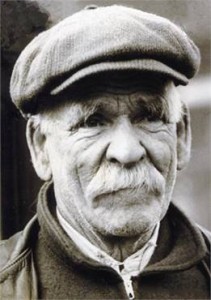
Robert Gray ran the toll gate that led to the train station platform. Funds collected were used to repair and maintain what is now Plains Road.
His home on Plains Road backed on to the tracks. Market garden farmers had to pay Gray a toll to get their wagons with the crops to the Freeman station, and then pay him again when they left the station, so they could return home. This was how money was raised at the time to ensure the road (now Plains Road) was well-maintained. Robert Gray was Mark Gillies’ great uncle.
In 1906 the Dominion Canning Company produced various tomato products and was located at the foot of Brant Street, basically where the Waterfront Hotel is today. The smell of tomatoes cooking, permeated the air of the waterfront.
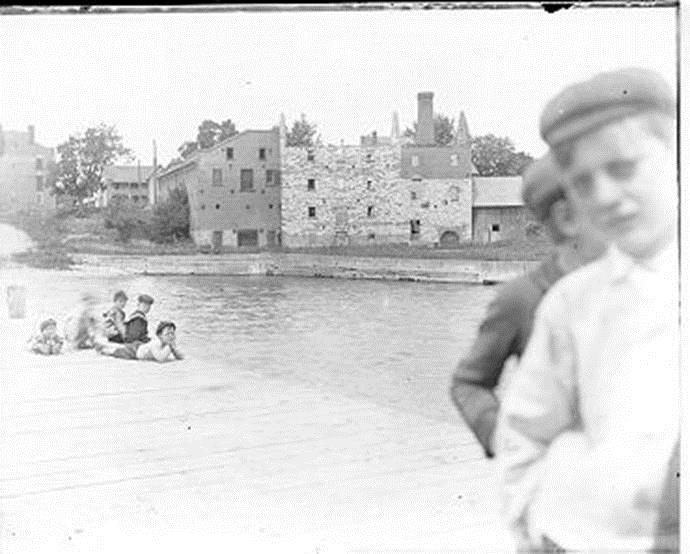
Dominion Canning at the foot of Brant Street. $14 million and 100 years later and we have a pier on the same site.
Today, Burlington, in fact the whole Region of Halton, doesn’t have very much in the way of a market garden economy. Some soybeans are grown, there are pick them yourself strawberry farms and a lot of hay is grown. The Region has an Agriculture committee and there are a few companies that package produce – but the trains don’t go through town anymore and a horse and wagon hasn’t been since on Mapleview since George Kerr was the Minister of something at Queen’s Park.
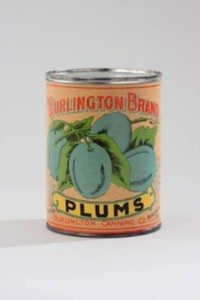
The city had its own brand for produce.
Ward 3 Councillor John Taylor want to see a bigger market somewhere south of Caroline; if he had his way he would shut Brant Street completely and make it totally pedestrian friendly.
Have you ever considered what it would be like for 100 per cent of your diet to come from local producers? That’s what J. B. MacKinnon and Alisa Smith decided to do — for an entire year. The couple devoted themselves to 12 months of eating only foods that came from within a 100-mile radius of their Vancouver apartment; an experiment in local eating that became a media phenomenon culminating in their book The 100-Mile Diet: A Year of Local Eating.
Is there a lesson here for Burlington? We were once nothing but an agricultural community; we grew some of the best produce in the world and shipped it around the world.
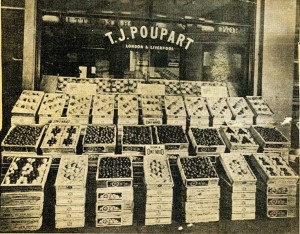 Now much of what we eat gets trucked in from California or Mexico – all kinds of foods being flown around the world that don’t need to be — for instance, apples coming from New Zealand, or potatoes from somewhere far away in the States, when all those things can grow easily in most places in Canada — particularly potatoes, or some other more humble vegetables.
Now much of what we eat gets trucked in from California or Mexico – all kinds of foods being flown around the world that don’t need to be — for instance, apples coming from New Zealand, or potatoes from somewhere far away in the States, when all those things can grow easily in most places in Canada — particularly potatoes, or some other more humble vegetables.
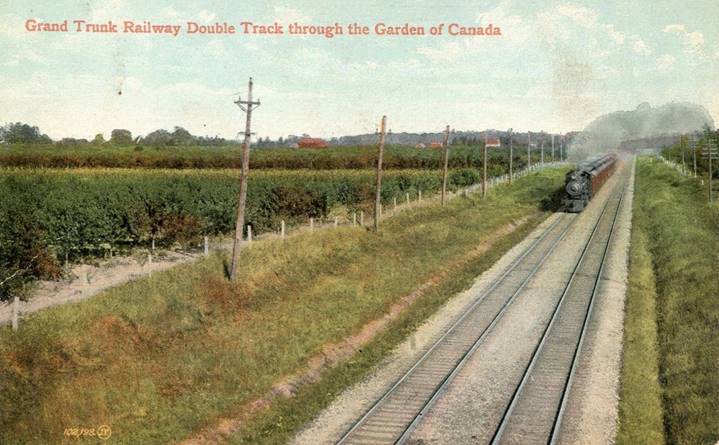
A double track was a big deal in the early 1900’s from farm to wagon to train to ships – Burlington produce was moved around the world.
The 100 mile diet raised the question of food miles — how far food travels from farm to plate is a starting point for many people. Burlington is currently in the process of studying the creation of a culturally protected part of the rural community – would this allow the growth of a market economy. Unbeknownst to many is the existence of a pear tree far on the north side of Dundas that has been in existence for more than 100 years.
The saving of Freeman station from a wrecking ball may have more than one lesson for us. It could point us to our past and teach us that the food we eat can come from all that land north of Dundas Road
The collection of pictures, which we have poached for the 20,000m people who consistently read the Gazette came from The Burlington Historical Society, The Joseph Brant Museum, the Ivan Cleaver Collection, George Kush, Dorothy Turcotte, and the late Jane Irwin.















In 1900, food took up about 40% of the average household budget. In 2003, it was about 12%. This is progress that I’m loath to give up.
Editor`s note: Interesting piece of information. Puts a different spin on the 100 mile diet.